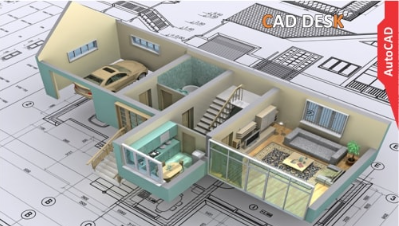
Auto cad Civil Course in Visakhapatnam | An AutoCAD Civil course trains students and professionals in civil engineering to use computer-aided design (CAD) software for drafting and designing infrastructure projects. These programs cover both foundational 2D drafting and advanced 3D modeling, with a focus on real-world applications in construction and architecture.
Typical Course Syllabus
A standard AutoCAD Civil course covers a range of topics, including:
- Interface and tools: Auto cad Civil Course in Visakhapatnam | An introduction to the AutoCAD workspace, user interface, command line, and file management.
- 2D drafting: Learning basic drawing, editing, and modifying tools to create precise floor plans, site layouts, and structural drawings.
- Layers and properties: Techniques for organizing drawings by using layers and managing object properties.
- Annotation: Adding dimensions, text, and other annotations to convey project information.
- Advanced 2D drafting: Using more complex tools for tasks such as hatching, creating blocks, and working with external references (Xrefs).
- 3D modeling: Building solid and surface models of civil structures like roads, bridges, and drainage systems.
- Civil 3D applications: In-depth training on specialized tools for land surveying, terrain modeling, and highway design.
- Plotting and layout: Auto cad Civil Course in Visakhapatnam | Preparing and printing final drawing layouts for presentation.
- Projects: Many courses include hands-on projects to simulate real-world civil engineering tasks, such as creating a 1-BHK plan or designing a road.
Career prospects
Auto cad Civil Course in Visakhapatnam | Graduates with AutoCAD Civil skills are in high demand across the architecture, engineering, and construction (AEC) industries. Potential career paths include:
- AutoCAD Drafter / CAD Technician: Creates and modifies 2D and 3D technical drawings based on engineers’ and architects’ designs.
- Civil CAD Designer: Specializes in designing and drafting civil infrastructure projects like roads, drainage systems, and site plans.
- Structural Drafter: Prepares detailed drawings for the structural components of buildings and bridges.
- Urban Planner: Uses CAD software for city and land-use planning.
- Freelance CAD Consultant: Works on independent projects for various clients.
Auto cad Civil Course in Visakhapatnam | Of course. Here is a comprehensive and structured outline for an AutoCAD Civil Course, specifically tailored for Civil 3D—the industry-standard software for civil engineering design and documentation.
This curriculum is designed to take a student from foundational concepts to proficient use in land development, transportation, and environmental projects.
Course Title: AutoCAD Civil 3D: Civil Site Design & Documentation

Target Audience: Auto cad Civil Course in Visakhapatnam | Civil engineering students, civil engineers, surveyors, drafters, designers, land planners, and infrastructure professionals.
Prerequisites:
- Basic computer literacy (Windows OS).
- Fundamental understanding of civil engineering concepts (e.g., surveying, grading, road design).
- Familiarity with basic AutoCAD commands is helpful but not mandatory.
Course Goal: Auto cad Civil Course in Visakhapatnam | To equip students with the skills to create, analyze, and manage intelligent, dynamic models for land development, transportation, and water projects, and to produce construction documentation efficiently.
Detailed Course Modules
Module 1: The Civil 3D Environment & Core Concepts
- 1.1 Introduction to BIM for Infrastructure: Understanding Building Information Modeling in the context of civil engineering. The difference between Civil 3D and basic AutoCAD.
- 1.2 The User Interface: Tour of the Civil 3D workspace: Ribbon, Toolspace (Prospector, Settings, Survey Tabs), Panorama, Command Line, and Inquiry Tool.
- 1.3 The Power of Dynamic Objects: The core concept of Civil 3D: objects (surfaces, alignments, profiles) are dynamically linked. A change in one updates all related objects and labels.
- 1.4 Styles and Settings: Understanding how object, label, and table styles control the appearance and behavior of every Civil 3D object. Introduction to the Settings tab for drawing and command settings.
Module 2: Points & Survey Data Management
- 2.1 Point Overview: Understanding Civil 3D points (COGO points) and their properties (number, elevation, description).
- 2.2 Creating Points: Manually and by importing from a text file or survey data collector.
- 2.3 Point Styles & Label Styles: Controlling how points look (symbol) and what information is displayed (elevation, description).
- 2.4 Point Groups: Organizing points logically (e.g., “Existing Ground,” “Top of Curb,” “Trees”) for easy management and editing.
- 2.5 Introduction to the Survey Tab: Processing raw field survey data.
Module 3: Surfaces – Modeling the Existing Terrain
- 3.1 What is a TIN? Understanding the Triangulated Irregular Network model.
- 3.2 Creating a Surface: Auto cad Civil Course in Visakhapatnam | Defining a surface from points, point groups, contour data, and breaklines.
- 3.3 Surface Analysis: Using analysis tools to visualize elevation, slope, aspect, and watersheds. Creating meaningful analysis styles.
- 3.4 Surface Labels: Adding spot elevation and slope labels.
- 3.5 Surface Editing: Modifying a surface by adding boundaries, editing points, and modifying triangles.
Module 4: Alignments – Designing the Horizontal Route

- 4.1 Alignment Concepts: Creating horizontal geometry for roads, pipelines, and ditches.
- 4.2 Creating Alignments: From objects, using the Layout Tool, or by importing.
- 4.3 Design Criteria: Using design check sets (e.g., minimum radius, superelevation) to ensure designs meet standards.
- 4.4 Alignment Labels: Applying stationing, geometry points, and other annotations. Using label sets.
Module 5: Profiles & Profile Views – Designing the Vertical Route
- 5.1 Profile Concepts: Auto cad Civil Course in Visakhapatnam | Creating and displaying the vertical section of a surface along an alignment.
- 5.2 Creating Surface Profiles: Extracting an existing ground profile from a surface.
- 5.3 Designing a Finished Grade Profile: Laying out a proposed vertical design (road centerline, pipeline) using tangents and parabolic vertical curves.
- 5.4 Profile View: Creating the grid for displaying profiles. Configuring multiple profiles in one view.
- 5.5 Profile Labels: Annoting PVI’s, grades, and curves.
Module 6: Corridors – The 3D Model of Your Design
- 6.1 Corridor Concepts: Auto cad Civil Course in Visakhapatnam | The heart of Civil 3D. A corridor is a 3D dynamic model that represents your design (e.g., a road, a railway).
- 6.2 Assemblies: Building the typical cross-section of your design using subassemblies (lanes, curbs, sidewalks, slopes).
- 6.3 Creating a Basic Road Corridor: Combining an alignment (horizontal), a profile (vertical), and an assembly (cross-section).
- 6.4 Corridor Targeting: Using targets to handle variable widths (lanes), slopes (daylighting), and transitions.
- 6.5 Corridor Surfaces: Extracting a surface from the corridor model for volume calculations and visualization.
Module 7: Sections & Quantities (Earthwork)
- 7.1 Sample Lines: Defining where cross-sections are taken along the alignment.
- 7.2 Section Views: Auto cad Civil Course in Visakhapatnam | Generating sheets of cross-sectional views showing both existing and proposed conditions.
- 7.3 Material Quantities (Earthwork): Calculating cut and fill volumes between two surfaces (e.g., existing ground and corridor surface). Generating a volume report.
Module 8: Pipe Networks & Grading
- 8.1 Pipe Networks: Designing gravity-based systems (sanitary sewers, storm drains).
- 8.2 Creating Networks from Objects or using the Layout Tool. Applying rules for pipe cover, slope, and connections.
- 8.3 Grading Tools: Using feature lines and grading objects to model complex surfaces for building pads, parking lots, and ponds.
- 8.4 Parcel Creation: Subdividing land and creating lot layouts with automatic labeling and area calculations.

Module 9: Plan Production & Documentation
- 9.1 View Frames and Match Lines: Setting up sheets for plan and profile views.
- 9.2 Creating Sheet Sets: Automatically generating multiple plot-ready drawing sheets.
- 9.3 Data Shortcuts: Managing large projects by referencing objects (surfaces, alignments) from other drawings. Essential for team collaboration.
- 9.4 Exporting Data: Exporting points to a data collector, surfaces to other formats, and creating data for machine control.
Module 10: Capstone Project
- Auto cad Civil Course in Visakhapatnam | Students will complete a small-scale land development project from start to finish.
- Project Requirements:
- Import Survey Data: Process points to create an existing ground surface.
- Design a Road: Create an alignment, design a profile, build an assembly, and create a corridor model.
- Site Grading: Create a graded pad for a building and a parking lot.
- Pipe Network: Design a simple storm drainage system.
- Calculate Earthwork: Generate a volume report for cut/fill.
- Produce Plans: Create a plan and profile sheet set with viewports, titles, and annotations.
Recommended Tools & Versio
- Software: AutoCAD Civil 3D : Auto cad Civil Course in Visakhapatnam | (Latest version or one version prior, available via Autodesk Education Community for free for students and educators).
- Resources: Practice datasets (survey points, etc.), design criteria tables, and typical drafting standards.
Learning Outcomes

Upon completion, students will be able to:
- Navigate the Civil 3D interface and understand its dynamic, object-oriented environment.
- Create and manage point data and generate an existing conditions surface model.
- Design horizontal alignments and vertical profiles for linear projects.
- Build a 3D corridor model for a road or other linear feature.
- Create pipe networks for storm and sanitary systems.
- Perform site grading and earthwork calculations.
- Use data shortcuts for project collaboration and management.
- Generate construction documentation, including plan sheets, profiles, sections, and volume reports.
- Understand the BIM for Infrastructure workflow from initial survey to final design.
Auto cad Civil Course in Visakhapatnam | This course is intensely practical and project-based, reflecting the real-world workflow of a civil designer or engineer. The capstone project is crucial for integrating all the discrete skills into a cohesive and professional design process.



